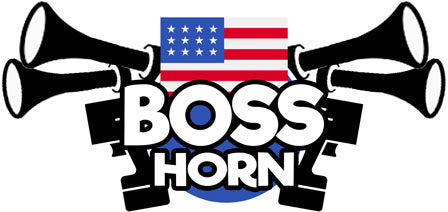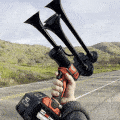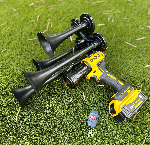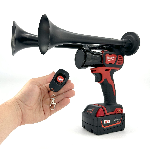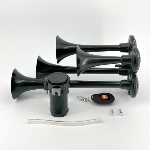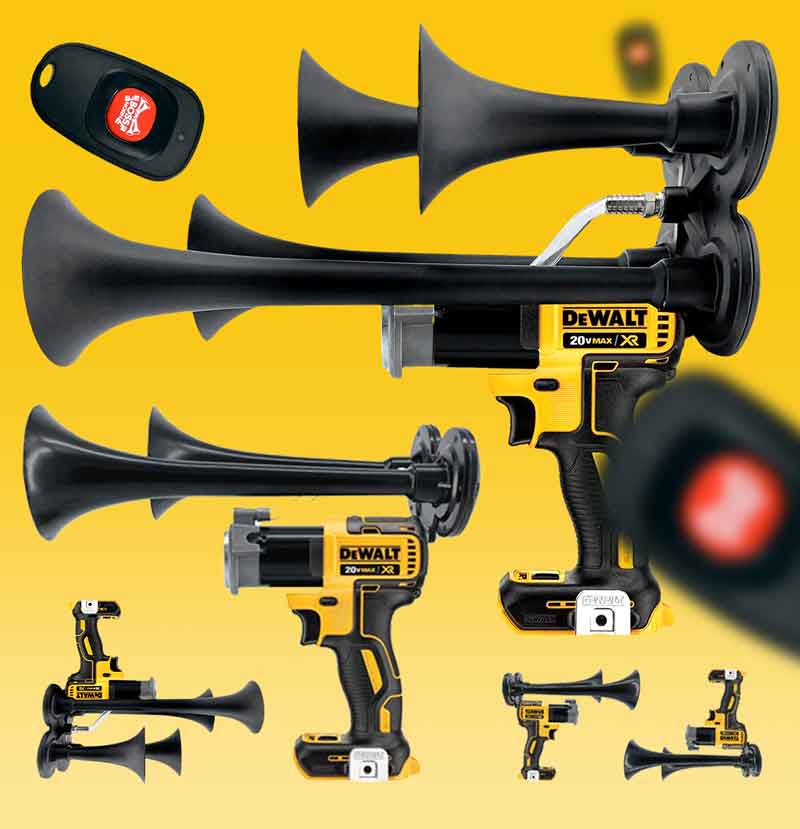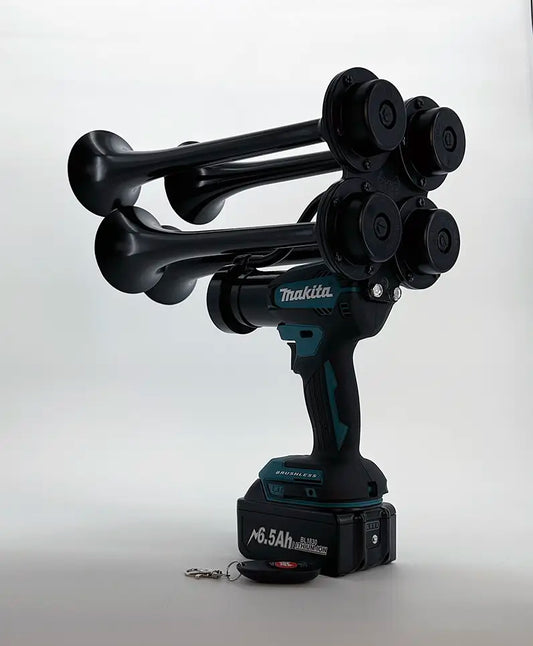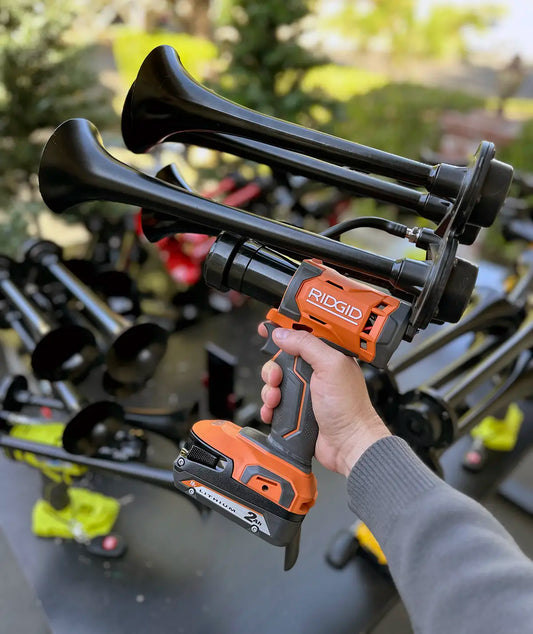Did you know that the loud noise emitted by trains as they approach crossings is a vital safety feature that has been in use for over a century? Train horns were first introduced in the early 19th century to warn pedestrians and vehicles of an approaching train and prevent accidents. To this day, they remain a crucial tool in ensuring the safety of both passengers and those around railway tracks.
The blaring sound of the train horn serves as a warning signal to alert people of the train's presence, especially at night or in foggy conditions when visibility is limited. By providing an audible warning, train horns help prevent collisions and save lives. In fact, research has shown that the use of train horns has significantly reduced the number of accidents at railway crossings, making them an essential safety measure in the transportation industry.
Despite the importance of train horns in promoting safety, there have been concerns raised about the level of noise pollution they create, particularly in residential areas near railway tracks. To address this issue, many railways have implemented quieter horn systems or have modified their horn patterns to minimize disturbance to nearby communities. These efforts strike a balance between ensuring safety and respecting the needs of the local population, highlighting the ongoing evolution of train horn technology to meet both safety and environmental concerns.
What is the purpose of a train blowing its horn? Learn about the safety measures and regulations behind this loud signal in railroad operations.
Train horns are important safety equipment that serve as a warning device to alert people and vehicles of an approaching train. The sound produced by a train horn is loud and unmistakable, designed to pierce through ambient noise and be heard from a distance. Let's take a closer look at the significance of train horns.
History
Historically, train horns were manually operated by the train engineer using a pull cord system. Modern train horns are now controlled electronically, allowing for more precise and consistent sounds. The use of train horns dates back to the early days of railroads when steam engines required a loud warning signal to alert pedestrians and other vehicles of their approach.
Regulations
The use of train horns is regulated by the Federal Railroad Administration (FRA) in the United States. These regulations specify when and where train horns must be sounded, such as at railroad crossings, in residential areas, and when approaching train stations. These regulations also dictate the minimum sound level and pattern of the train horn to ensure consistency and effectiveness.
Impact
The purpose of train horns is to warn people and vehicles of the presence of an oncoming train, preventing accidents and saving lives. The loud sound of a train horn can cut through distractions and capture attention, prompting individuals to quickly clear the tracks and avoid dangerous situations. Train horns are a vital safety feature that helps to mitigate the risks associated with railway operations.
- Train horns are required by law to be sounded at all public grade crossings to alert drivers and pedestrians of an approaching train.
- Train horns are also used in emergency situations to warn of potential dangers or obstructions on the tracks.
- Train horns are designed to be loud enough to be heard over ambient noise and from a distance to ensure maximum warning effectiveness.
Statistics
According to the Federal Railroad Administration (FRA), train horns are a critical safety measure that significantly reduce the number of accidents at railroad crossings. In 2019, there were 580 fatalities and 750 injuries at railroad crossings in the United States. However, the FRA estimates that the proper use of train horns can prevent up to 40% of these incidents. This underscores the importance of train horns in promoting railway safety and preventing tragedies.
https://youtube.com/watch?v=yrRmPsr9FoA
Frequently Asked Questions About Train Horns
1. Why do trains make loud noises near railroad crossings?
Trains use loud horns near railroad crossings to alert motorists, pedestrians, and animals of their presence. This ensures everyone around the tracks is aware of the approaching train and can safely clear the area. The loud horn is a critical safety measure to prevent accidents and save lives.
- Trains use loud horns near railroad crossings for safety reasons.
- The horn alerts motorists, pedestrians, and animals of the approaching train.
- The purpose of the loud horn is to prevent accidents and ensure safety.
2. Are there specific rules or regulations regarding the use of train horns?
Yes, there are specific rules and regulations governing the use of train horns. In the United States, the Federal Railroad Administration (FRA) has established guidelines for when and how train horns should be used. This includes mandatory sounding of the horn at designated locations such as railroad crossings. Failure to comply with these regulations can result in penalties for the railroad company.
- The Federal Railroad Administration has guidelines for the use of train horns.
- Train horns must be sounded at designated locations such as railroad crossings.
- Non-compliance with horn regulations can lead to penalties for the railroad company.
3. How far away can a train horn be heard?
The sound of a train horn can travel a significant distance, depending on various factors such as the terrain, weather conditions, and the intensity of the horn itself. On average, a train horn can be heard up to a mile away in ideal conditions. However, factors like buildings, trees, and other obstacles can affect the range of the horn's sound.
- Train horns can be heard up to a mile away in ideal conditions.
- Various factors like terrain and weather can influence the distance the horn travels.
- Obstacles like buildings and trees can impact the range of the horn's sound.
4. Can the sound of a train horn be harmful to human ears?
The sound of a train horn, like any loud noise, can potentially be harmful to human ears if exposed for prolonged periods at close range. The high decibel levels emitted by train horns can cause hearing damage if individuals are regularly exposed without proper protection. It is essential for those in close proximity to train horns to take necessary precautions to safeguard their hearing health.
- Prolonged exposure to train horn noise at close range can be harmful to human ears.
- High decibel levels emitted by train horns can cause hearing damage.
- It is crucial for individuals near train horns to protect their hearing with proper precautions.
5. Can train horns be modified to make them quieter?
Train horns are an essential safety feature to alert individuals of an approaching train. As such, train horns are manufactured to meet specific sound requirements set by regulatory bodies. Modifying train horns to make them quieter can compromise the horn's effectiveness in alerting people near the tracks. Any alterations to train horns should be done in compliance with regulations to ensure safety is not compromised.
- Train horns are designed to meet specific sound requirements for safety.
- Modifying train horns to be quieter can affect their effectiveness in alerting individuals.
- Any changes to train horns should be made in compliance with safety regulations.
Conclusion
In conclusion, the train blowing horn serves as a crucial safety feature that alerts pedestrians and vehicles of a train's presence, helping to prevent accidents and ensure the safety of everyone in the vicinity. The sound of the horn is governed by specific regulations to ensure consistency and effectiveness. Train engineers are trained to use the horn in accordance with these regulations, utilizing different patterns and sequences to communicate with others on the railway. Overall, the train blowing horn plays a vital role in maintaining safety and efficiency in the operation of trains.
